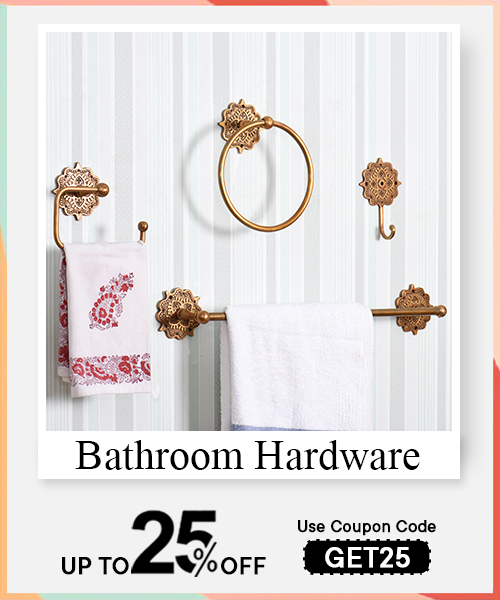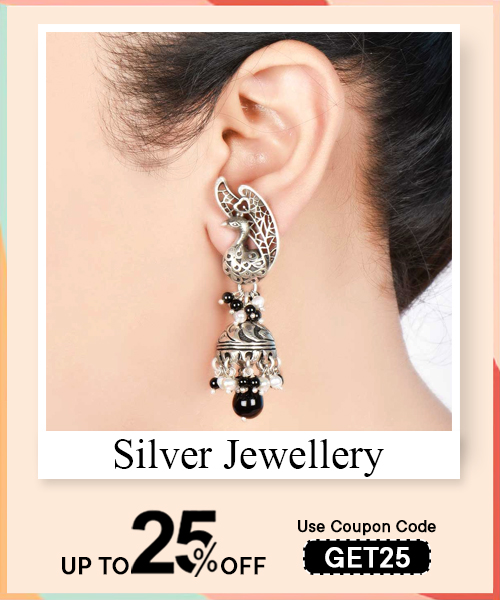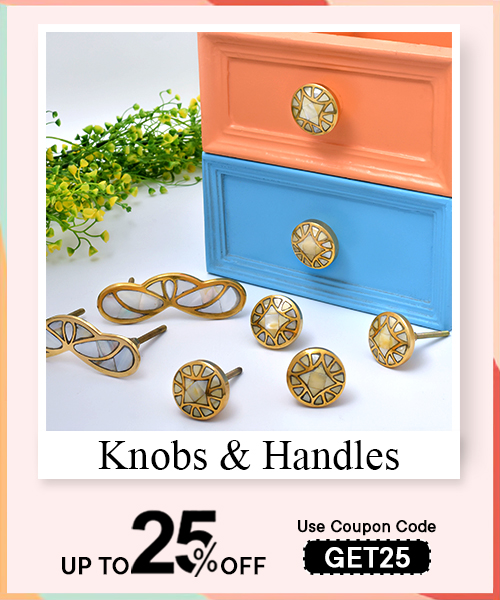Rococo is the whisper after a thunderstorm, the curl of a vine instead of the branch. It is a style that forsakes the solemn for the seductive, where canvas becomes a flirtation and form dances like silk in candlelight. In the wake of the grandeur of Baroque, Rococo embraced asymmetry, pastel palettes, and an intimacy that spoke not to power, but to pleasure. Think of Watteau’s figures lost in reverie or Fragonard’s cascades of fabric and flowered trellises — compositions that shimmer rather than thunder. It is not just a style but a sigh; a light brushstroke of elegance, leisure, and sensuality that tiptoes through salons rather than marching through cathedrals. Every element — the serpentine line, the luminous surface, the ethereal drapery — whispers opulence without declaring it. Rococo is less a period and more a mood captured in oil and gold leaf.
Rococo is defined by its lightness, lyricism, and longing for pleasure. Emerging in 18th-century France, it abandoned the strict, ecclesiastical drama of Baroque for a more secular, ornamental palette. This style prioritizes asymmetry, pastel color schemes, whimsical subject matter, and delicate detailing, particularly through the use of arabesques and rocaille motifs — curled foliage and shell forms that mimic nature’s fragility. The brushwork is soft, feathery, often vaporous, evoking a fleeting dream rather than an epic tale. Themes orbit around aristocratic leisure, mythology reimagined as flirtation, and intimate landscapes. Rococo paints with the vocabulary of lace, porcelain, and chanson. Emotionally, it’s affective but restrained — elegance without grandeur. Artists like Fragonard, Boucher, and Watteau capture this tone: not confrontational but inviting, not divine but delicately human. It’s a world painted not in proclamations, but in sighs, glances, and stolen afternoons in gilded gardens.
Baroque is a cathedral; Rococo is a boudoir. Where Baroque art commands, Rococo seduces. The Baroque style — with its deep chiaroscuro, monumental scale, and religious intensity — appeals to divinity, authority, and the sublime. It carves narratives in marble and paints drama in bold contrasts. Rococo, by contrast, steps down from the altar into the salon. Its palette softens to pastels; its subjects shift from biblical epics to aristocratic whimsy, from crucifixions to courtships. Baroque speaks in basso continuo; Rococo sings in harpsichord trills. The brushwork in Baroque is bold, theatrical; Rococo flickers with light, like a whisper between lovers. If Baroque is Caravaggio’s chiaroscuro martyrdom, Rococo is Fragonard’s girl on a swing. Philosophically, Baroque is weight; Rococo is weightlessness — reflecting shifts from absolutism and Catholic dogma to Enlightenment thought and bourgeois pleasure. One shapes stone and gold; the other curls ivory and lace. They differ not just in technique, but in spirit.
Rococo painting is composed like a lyrical sonata — structured, yet indulgently fluid. Visually, it rests on several hallmarks: pastel color palettes (pinks, blues, creams, and soft golds), asymmetrical compositions, and curvaceous lines that mimic nature’s flourishes. The brushwork is loose, expressive, often giving a pearlescent or powdered quality to skin and fabric. There's a signature softness in Rococo texture — garments rendered like whipped cream, skies painted like porcelain glaze. Key motifs include cherubs, fountains, mythological deities, and aristocrats at leisure, often amid garden fêtes or fantastical naturescapes. Light plays a central role — not as divine radiance but as a delicate filter, giving scenes a dreamlike suspension. Ornamental excess is celebrated: garlands, scrolls, florals, shell forms. The human figure is often stylized, more decorative than anatomical. Emotion is nuanced — conveyed in posture, gaze, or gesture, never overwrought. Altogether, Rococo’s visuality is a choreography of grace over gravity.
Read More : Lepakshi Paintings : A Window into India's Mythological Past
Rococo was born in the satin-lined aftermath of the Sun King’s shadow. With Louis XIV’s death in 1715, France drifted from Versailles’ rigid grandeur to the intimate salons of Paris. Power loosened its belt, and culture exhaled. Rococo emerged like a flower breaking through marble — organic, indulgent, ephemeral. The church lost its monopoly on taste; aristocracy claimed art as an accessory to pleasure. Decorative arts influenced canvas — porcelain, furniture, and tapestry dictated the aesthetic. Rococo was not a revolution, but an evolution — a shift from baroque gravitas to bourgeois delight. Its inception reflected the rise of Enlightenment philosophy, secularism, and a focus on individual joy. Painters became poets of sensation. This style wasn’t meant to immortalize — it was meant to please, momentarily. History cradled Rococo in its quieter chapter, not in cataclysms but in whispered rendezvous and golden afternoons, painted with the same tenderness one might reserve for a lover’s portrait.
Rococo painting emerged in early 18th-century France, around 1715, coinciding with the death of Louis XIV. His passing marked the end of the Baroque-dominated French court and the beginning of a more relaxed, hedonistic period under the Regency of Philippe d'Orléans. This era witnessed a pivot from Versailles' authoritarian grandeur to the private, often decadent world of Parisian salons. Rococo first blossomed in interior design, influencing paneling, furniture, and decorative objects, before migrating onto canvas with artists like Jean-Antoine Watteau, whose fête galante paintings became a hallmark of the style. By the 1730s, painters such as François Boucher and Jean-Honoré Fragonard were giving visual voice to Rococo’s ethos. While France was its cradle, the style soon spread to Italy, Germany, and Austria, adapting to regional tastes. Rococo thrived until the 1770s, eventually displaced by the Neoclassical reaction driven by Enlightenment rationalism and a renewed appetite for austerity and civic virtue.
Rococo’s ascent was shaped by political, social, and cultural tremors. Post-Louis XIV, France entered the Regency period, where the monarchy loosened its rigid control and aristocracy flourished in urban private life. With the court no longer tethered to Versailles’ strict ceremonial life, art became more personal and escapist. Simultaneously, philosophical shifts influenced aesthetics: Enlightenment thinkers challenged religious orthodoxy and elevated secular pleasures. This gave artists liberty to explore themes of love, leisure, and mythology without ecclesiastical constraint. Economically, a wealthy bourgeois class emerged, commissioning art that mirrored their romanticized lives. Culturally, the decorative arts began to lead visual trends — with porcelain, textile, and furniture design influencing painting. Additionally, women held increasing power in the cultural salons, encouraging themes of romance, sentiment, and intimacy. All these factors — decentralization of power, secularization, growing affluence, and gendered cultural shifts — conspired to birth Rococo: a style born of freedom, froth, and fleeting pleasures.
Rococo was the mirror of its age — polished, ornamental, and tinged with escapism. In 18th-century France, aristocracy had shifted from absolutist solemnity to a pursuit of leisure, elegance, and eroticism. The art no longer sought to edify or glorify God or king; instead, it whispered the pleasures of dalliance, domesticity, and sensuality. This was a culture leaning into the Enlightenment’s secular winds, indulging in conversation, wit, and emotion rather than obedience and piety. The salon replaced the church as a center of discourse; love letters became more vital than scripture. Rococo’s flirtatious mythologies, idyllic picnics, and softly erotic imagery reflect this societal turn inward — from grand public spectacle to private sentiment. Gender dynamics also shifted: women, as patrons and muses, played a central role in shaping artistic themes. Ultimately, Rococo became a decorative veil — not to deceive, but to beautify — masking societal fragility with layers of lace, laughter, and paint.
The Rococo palette sparkled under the brushes of Jean-Antoine Watteau, François Boucher, and Jean-Honoré Fragonard—names that echo like ornate frescoes in gilded salons. Watteau initiated the fête galante genre, painting wistful gatherings of elegantly dressed lovers in dreamy landscapes. Boucher, court painter to Madame de Pompadour, infused canvases with mythological voluptuousness. Fragonard spun intimacy into motion with theatrical lightness and fluid sensuality. Each painter, a master of pictorial grace, offered a different movement: Watteau melancholic, Boucher decadent, Fragonard playful. Their oeuvres aren’t merely portraits of privilege but of human behavior, captured in the chiaroscuro of desire and frivolity.
Fragonard’s The Swing—a visual sonnet—embodies the spirit of Rococo with airborne satin, flirtatious movement, and covert glances. Boucher’s Diana Bathing conjures myth through soft contours and rose-lit skin. Watteau’s Pilgrimage to Cythera is a reverie, drifting between joy and wistfulness. Each work bends space into theatre, light into costume, and color into intimacy. Rococo doesn't scream; it whispers in silks, lace, and garden shadows. These paintings are chamber symphonies, rich with visual allegro and adagio. Iconic not for grandeur but nuance, they trace the contours of fleeting pleasures with a feather rather than a chisel—pictorial embroidery at its finest.
Fragonard and Boucher didn’t just paint Rococo—they embroidered its sensual pulse into cultural memory. Boucher’s work codified the language of ornamental eroticism, blending mythology with flesh. His compositions resemble baroque arias sung through powdered wigs and gold-tinted mirrors. Fragonard, a more playful draftsman, injected dynamism into this dreamscape. His brush danced like an operatic cadenza—light, sudden, teasing. Together, they turned canvases into stages for desire, fantasy, and decorum. Their influence went beyond aesthetics—they defined Rococo’s worldview: beauty for beauty’s sake, emotion as ornament, storytelling in whispers. They replaced moral drama with elegant dalliance, shadowing 18th-century life with romantic artifice.
Rococo art is a still-life of pleasure: aristocrats in masquerade, nymphs among flowers, cherubs tumbling through pastels. The subjects—mythological escapades, flirtations in secret gardens, toilette scenes—are not grand narratives but interior moods externalized. Everything is soft: gestures, gazes, fabrics. The world here is lacquered with delight, framed in garlands. The genre revels in the interstitial—between a touch and a kiss, a whisper and a giggle. There’s an emphasis on leisure, erotic play, and domestic intimacy. Unlike Baroque grandeur or Neoclassical stoicism, Rococo paints existence as an ornament: porcelain moments floating in daylight, shaped less by plot, more by perfume.
Romance in Rococo is a pirouette, not a proclamation. Lovers recline in secret groves, their bodies curved like musical notes. Leisure isn't idle—it's curated, performed. Fragonard’s The Swing captures romance in mid-air, cloaked in mischief. Boucher’s couples gaze, not with longing, but playful complicity. The brushwork mimics the affect: light, swirling, teasing. No solemnity, just perpetual foreplay. Even domesticity is adorned—boudoirs become theatres of allure. Here, romance is an art form, leisure a narrative. It’s less about connection and more about choreography—emotions traced in lace and shadow. Every gesture is a tableau vivant, every look a painted sigh.
Mythology in Rococo is costume, not conviction. Gods and goddesses appear as aristocrats in divine drag. Boucher’s Venus Consoling Love or Diana Leaving the Bath isn’t about divine truths but human fantasies projected into Olympus. The mythological allows eroticism to mask itself in allegory. It liberates flesh from shame under the veil of storytelling. These deities flirt, bathe, and recline—not to reveal truths but to indulge visual decadence. Myth here is a Rococo pretext: an excuse for opulence, sensuality, and painterly performance. The sacred is made playful, the eternal rendered ephemeral—gilded illusions of higher purpose wrapped in silk and satire.
Rococo brushwork flutters like a fan in a masked ball—graceful, fast, and flirtatious. Artists used light, feathery strokes to mimic the softness of taffeta, the curl of hair, or the blush on porcelain cheeks. The technique resists heaviness; it skips rather than settles. Impasto is rare—everything is glazed, breathed upon. The texture recalls pastel sketches or opera set-paintings. Even the shadows are lit with shimmer. Movement dominates stillness. Artists layered their paints to create optical delicacy, their brushes flicking and swirling like gestures in courtship. In Rococo, the brush isn't a tool—it’s a ribbon, tying sentiment to surface.
Light in Rococo is ambient, like sun filtered through embroidered curtains. It caresses instead of illuminates. No chiaroscuro dramatics—just radiant softness. Color palettes favor rose, pearl, gold, seafoam, and lavender—tones that taste like dessert and perfume. Light doesn’t guide the eye to morals but pleasures. Skin is rendered like porcelain; skies are powdery veils. Artists used scumbled layers and delicate gradations to bathe figures in diffused luminosity. Color isn’t symbolic—it’s atmospheric. It whispers, never commands. The emotional weight is in hues, not lines. Like stained glass in motion, the Rococo canvas dissolves form into mood, line into velvet.
Oil on canvas was the medium of choice, providing the liquidity and layering Rococo demanded. The surface needed to hold the shimmer of satins, the glisten of flesh, and the vapor of powdered skies. Artists used fine sable brushes for intricate detailing and wide soft brushes for glazed atmospheres. Gesso-primed grounds allowed luminosity to bloom from beneath layers. Occasionally, they painted on wood panels or tapestries, but the elegance of canvas dominated. Pigments like vermilion, ultramarine, and lead-tin yellow were diluted for transparency. Even the materials echoed Rococo’s ethos: delicate, responsive, ornate. The canvas wasn’t a battlefield—it was a boudoir.
Rococo is the whisper of powdered pigments on silk wallpaper, a choreography of curves and gilded whims. It wasn’t just a painting style—it seeped into the grain of furniture, the folds of fashion, the very breath of boudoirs. Decorative arts mirrored its pastel exuberance: cabriole legs curled like brushstrokes, mirrors bloomed with acanthus leaves, porcelain danced with narrative. Rococo transformed the home into a canvas, each room an allegory, each object an étude in elegance. Shell motifs, sinuous lines, and asymmetry turned static objects into visual music, an aria of intimacy and pleasure. In Rococo, the everyday became theatrical.
Rococo painting wasn’t confined to canvas—it leapt into interiors like a fresco bleeding onto furniture. Painters like Boucher and Fragonard used pastels, arabesques, and flirtatious themes that became blueprints for room aesthetics. Walls became frames for painted panels; ceilings spilled with cherubs and clouds, erasing structural weight. Just as brushstrokes created illusion and motion, interior design borrowed this fluidity—walls weren’t just walls but dreamscapes. The architecture began to dissolve, guided by painterly illusions. Ornament was no longer applied; it was composed, like a tonal harmony. Light was choreographed across stucco, mirrors, and silk. Painting taught interiors to seduce, not instruct.
Furniture during the Rococo era was sculpted like a marble bas-relief—organic, alive, intimate. Cabriole legs echoed arabesques; marquetry told pastoral tales like Boucher’s canvases. Gilded wood curled like calligraphy, not as grand declarations but as flirtations. Fashion mirrored this sensual asymmetry. Corsets became corsages of satin and lace, sleeves like porcelain waves. Men’s waistcoats mirrored the ornate wall panels of Hôtel de Soubise. Every stitch, inlay, or tassel was a brushstroke in a larger tableau vivant. Rococo’s essence lay in ornament as language—not surplus, but subtext. It wasn’t about utility; it was about narrative delicately embroidered into form.
Rococo’s sensibility transcended canvas, infiltrating the atmospheric—the perfume of design. It textured architecture with stucco arabesques and pastel frescoes. Music softened too: Rameau and Couperin scored salons with ornamental, meandering melodies. In theatre, gestures grew more nuanced, gestures as detailed as Fragonard’s foliage. Even gardens, such as those by Le Nôtre, unfurled like painted scrolls—winding, playful, intimate. Rococo didn’t stop at visuals—it orchestrated ambiance. It was style as synesthesia, merging touch, sight, and mood. Like chiaroscuro inverted, it sought not drama but diffusion. It taught that beauty doesn’t always declare; sometimes, it suggests—like a glance caught between brushstrokes.

Rococo was a cadenza of pleasure, but its aftermath played in deeper registers. Neoclassicism responded like a graphite sketch—structured, heroic, austere. Romanticism absorbed Rococo’s sensuality but gave it stormclouds instead of silk. Impressionism retained its attention to light, but replaced myth with moments. Rococo was Rocaille—stone turned to ornament. Later art, particularly Modernism, chiseled back to essence. Yet even in rejection, echoes linger. Surrealism’s dreamscapes, Art Nouveau’s lines, and fashion’s maximalist revivals all nod to Rococo. Every movement afterward either turned its face from Rococo or looked into its mirror, seeing something softer, more playful—dangerously beautiful and deliberately ephemeral.
Neoclassicism was a palette cleanser—black ink after powdered pinks. Where Rococo curled into intimacy, Neoclassicism stretched toward gravitas. Artists like Jacques-Louis David painted with the severity of sculpture, rejecting the coquettish allure of Fragonard. Structure replaced suggestion; virtue supplanted desire. Rococo’s organic fluidity gave way to Roman columns and Greco-Roman narratives. Interiors shed their mirrored flounces for linear symmetry, replacing private boudoirs with civic ideals. This wasn’t mere aesthetic opposition—it was moral correction. Neoclassicism saw Rococo as decadent excess, art unanchored from truth. It responded by excavating history, building with marble lines what Rococo once whispered in curves and lace.
Romanticism was Rococo’s haunted twin—emotional where Rococo was erotic, wild where Rococo was wistful. While Romanticism scorned Rococo’s superficiality, it inherited its emotionality and subjectivity. The desire to escape—to dream, to feel—threads through both. Rococo set the stage: it painted shepherds in Arcadia, a curated fantasy of nature. Romanticism tore the veil, showing sublime mountains and tragic lovers. Rococo’s soft light became Turner’s storm, Goya’s shadow. Yet Romanticism’s use of allegory, its elevation of the individual and imaginative, recalls Rococo’s delight in personal reverie. Both movements trusted the senses. Rococo whispered pleasure; Romanticism screamed meaning. But both dreamed.
Modern art often seems Rococo’s inverse—brutalist where Rococo is baroque, cerebral where Rococo is sensory. Rococo is anchored in ornament and intimacy, while modernism often strips to skeletons. Yet both, paradoxically, interrogate structure. Where Rococo dissolves the frame through asymmetry, modern art erases it altogether. Take Mondrian’s grid: an anti-Rococo of geometry, yet both are studies in rhythm. If Rococo is a lyrical etude, modern art is a minimalist fugue. Even abstract expressionism, with its gestural brushwork, echoes Rococo’s flourish. The contrast is often misread—modernism doesn’t reject emotion, it refines it. Rococo seduces with surface; modern art exposes the bones beneath.
Rococo never died—it transfigured. In today’s media, Rococo breathes through the mise-en-scène of Sofia Coppola’s Marie Antoinette, or the curated maximalism of fashion editorials. Music videos, digital collages, and luxury branding echo its tactile sensuality. Artists now use Rococo less as inheritance and more as visual strategy: a reference to indulgence, artifice, and curated reality. It’s a visual rhetoric of softness as resistance. In a world of minimalism, Rococo becomes rebellion. Its influence isn’t aesthetic alone—it’s a gesture, a palette, an attitude. In every ornate TikTok set, hyper-designed boutique, or whimsical filter, Rococo’s powder and pearls glitter quietly.
Contemporary artists mine Rococo for its radical softness, its tactile indulgence. Kehinde Wiley reclaims its grandeur by inserting Black bodies into baroque frames, turning Rococo’s exclusion into spectacle. Others, like Cindy Sherman, deconstruct its femininity, parodying its artifice. In digital art, Rococo’s aesthetic excess becomes commentary—filtered opulence, curated chaos. Its asymmetry and flourish find new language in glitch art and generative design. Artists respond not just to its visuals but to its performative intimacy: how it makes space for desire, leisure, and artifice. Rococo becomes postmodern, almost punk in its extravagance. In resisting utility, it dares beauty to be enough.
Fashion campaigns by Gucci and Dior echo Rococo’s drama—lush tapestries of color, texture, and symbolism. Films like The Favourite and Marie Antoinette mirror its saturated lighting and costume politics. Video games such as Assassin’s Creed: Unity revive Rococo interiors, making history playable. Instagram aesthetics—cottagecore, maximalism, dopamine dressing—are digital Rococo: life stylized into curated still lifes. Even NFTs and 3D animation indulge in its ornate forms. Rococo’s influence isn’t just aesthetic—it’s tonal: ironic sincerity, nostalgic excess, emotional hyperbole. In modern media, Rococo functions like a glaze—layering reality with whimsy, intimacy, and a refusal to be stripped of ornament or emotion.
Yes, but not as homage—as reinterpretation. Rococo returns like an apparition in high fashion, digital art, drag culture, and interior maximalism. It thrives in a culture rediscovering intimacy and ornament in the face of utility and sterility. In a minimalist world, the ornate becomes radical. Rococo’s revival is conscious: not pastiche but dialogue. Artists engage with its sensuality, theatricality, and subversion. Feminist art reclaims its boudoirs; queer aesthetics embrace its performative elegance. In galleries and metaverses alike, Rococo returns not as nostalgia but provocation. It challenges us: what if beauty is valid? What if art can still flirt and delight?
Read More : What Is Encaustic Painting? Techniques, History, Materials & Meaning
Cleaning Rococo paintings is like lifting centuries of breath from a silk veil. The surface, typically glazed with soft pastels and gilded grace, demands a dry and light-handed approach. Feather dusters made from sable hair, gentle micro-vacuums, or dry microfiber cloths—never abrasive—are ideal for superficial dust. If grime has seeped into the varnish, a conservator might apply a solvent gel, testing fragment by fragment as if composing a chiaroscuro in reverse. Every swirl of paint echoes flamboyance; its cleaning should feel like restoring rhythm to a forgotten harpsichord—delicate, almost invisible. Touching the canvas is forbidden. One navigates with light, not force.
The best method for cleaning Rococo paintings is a non-invasive, layered approach that mimics restoration more than cleaning. Dry surface cleaning with a soft natural brush or microfiber cloth is safe for everyday dust removal. However, for accumulated grime or yellowed varnish, conservators use solvent gels, cotton swabs, and precision—akin to restoring an old fresco, inch by inch, tone by tone. This process may involve applying a mild solvent to test sections to dissolve dirt without disrupting the original pigment. Rococo paintings, with their lavish gilding and pastel tonalities, are as fragile as frescoed ceilings—demanding a curator’s eye and an archivist’s patience. If ever in doubt, step away and consult a trained hand. Amateur cleaning, even with noble intent, can cause irreparable damage akin to scratching gold leaf with fingernails.
Cleaning frequency should mirror the pace of time itself: slow, reverent, and occasional. Dust may settle like whispered stories on the surface—requiring only gentle attention every six months. But deep cleaning? That’s reserved for decades, not years. If the painting resides in a climate-controlled, low-traffic environment, surface dusting every few months with a fine brush suffices. Over-cleaning is a silent vandal, gradually eroding the powdered blues and porcelain pinks that define Rococo grace. Paintings should rest in stillness, not be scrubbed into brightness. Think of them as stage curtains in a forgotten theatre—beautiful in their age, deserving only the occasional sweep before a performance.
Absolutely, yes. Rococo works are not simply paintings; they’re historical manuscripts written in glaze and ornament. The baroque undulations, the gilded scrolls, the powdered luminosity of each cherub—every detail is a note in a minuet. To clean such a piece without knowledge is to paint over a requiem with house paint. Specialized conservators possess the training to distinguish between original varnish and later touch-ups, to test solvents with restraint, and to recognize when the artwork speaks, asking for preservation over perfection. Their tools are not just chemical but philosophical. A conservator does not “fix”—they listen, interpret, and reveal. One cannot, and must not, reduce such nuance to household remedies.
Maintaining a Rococo painting is akin to curating a timeless opera. The colors—rose quartz pinks, pale celadon greens, cloud blues—must be allowed to breathe but never blister. Use UV-protective glass, avoid direct lighting, and regulate humidity between 45-55%. Like guarding parchment from fire, avoid proximity to heating vents or kitchen walls. Regular inspection for insects or frame decay is essential. The frame—often a golden flourish of acanthus leaves and garlands—must be brushed gently with goat-hair brushes. If any gilding chips, resist the urge to repair; document and wait for a professional. These paintings are living dioramas—care demands observation, not obsession.
The vibrancy of Rococo lies in its airiness—its refusal to anchor itself to the dramatic weight of Baroque. To retain this vitality, keep paintings in soft, diffused lighting—preferably LED with no UV output. Frame them with museum-quality UV-filtered glass if possible. Never hang opposite a window or under a spotlight, as the pastels will fade like overexposed film. Temperature should be consistent, ideally between 18-21°C (64-70°F), and humidity stable. Dust only with natural-hair brushes. Never use chemicals, sprays, or cloths with lint. Think of the painting as a dancer in repose—the setting must allow it to exhale, not force it to stand still in discomfort. Restore its silence, and its colors shall sing.
Preservation depends on constancy and care—like tending a still-life that paints itself over time. Stable humidity (around 50%) and cool, indirect light are non-negotiables. Exposure to dramatic shifts in temperature or light is as dangerous as cracked marble. Avoid wood stoves, radiators, and air conditioning vents. The room should be as still as a gallery wing in winter—minimal vibration, minimal air flow. If stored, paintings must rest vertically, never flat, with acid-free backing. The artwork should never touch the glass directly—always use spacers. Even the air around it should feel like a hush. Let it inhabit stillness, and it will outlast centuries.
Rococo frames are sculptures in themselves—whorls of ornamentation that demand restraint. To protect them, avoid direct touch; the oils from fingers tarnish gilded wood. Dust lightly with a camel-hair brush. Never use water. If cracks appear, consult a framer or conservator. Temperature fluctuations can cause the wood beneath the gilding to expand or contract, leading to flaking. Keep away from doorways or areas prone to vibrations. Displaying them inside a glass case or shadow box adds a theatrical buffer. Consider them like the proscenium arch of an opera—they aren’t just edges, they’re the grand entrance to visual poetry. Preserve the frame, and you preserve the breath of the artwork.
Buying Rococo art is like collecting moonlight pressed into canvas. Seek out auction houses with lineage—Sotheby’s, Christie’s, Dorotheum—or galleries with provenance records and verified curatorial history. Avoid online dealers with vague origin stories. A true Rococo piece should come with paperwork: origin, ownership lineage, restoration records. Look for hallmarks—layered brushwork, asymmetrical composition, pastel luminosity, delicate erotics veiled in allegory. Counterfeits often mimic the curls but miss the soul. Originals carry a patina, a breath of the 18th century embedded within their craquelure. If the artwork feels too clean, too bright—it might just be too new.
Authentic Rococo paintings are best acquired through respected auction houses—Sotheby’s, Christie’s, and regional giants like Dorotheum in Vienna—where provenance is meticulously tracked. Trusted galleries in Paris, Brussels, and select New York or London establishments may also house legitimate pieces. Private collections sometimes open through estate sales, though these require a conservator’s eye and a historian’s research. Online marketplaces should be approached with extreme caution; even with photos, nothing substitutes in-person examination or third-party appraisal. The art must come with a pedigree—a timeline of ownership, appraisals, and conservation. A Rococo work isn’t a trinket; it’s a fragment of the Enlightenment, and where it comes from matters as much as what it depicts.
Authenticity resides not just in the image but in the canvas, the stretcher, the frame, and the varnish. First, demand provenance: previous ownership, auction records, conservation documentation. Second, observe under UV light—restoration work fluoresces; original paint doesn’t. A skilled appraiser will test pigments, canvas weave, and ground layers to place the work within the 18th-century matrix. Brushstroke patterns, craquelure, and the mannered composition (diagonal lines, mythological flirtations, putti, and floral cascades) are signatures. Beware modern imitations—they often mistake kitsch for elegance. Hire a conservator or museum expert for a full inspection before purchasing. A fake might have the curves but never the composition’s breath.
Rococo painting is not merely a style—it’s a curvilinear whisper, a powdered flourish, a silk thread gliding through a pastel dream. To learn its techniques is to study brushwork that bends like tendrils of smoke—light, graceful, and decadently ornate. Begin with gesture, focus on glazing and the scumbling technique, vital to mimic the luminous, powdered flesh tones of Fragonard or Boucher. Mastering grisaille underpainting or chiaroscuro softened by sfumato lends structure to the seemingly air-borne. Examine composition asymmetry—shell-shaped sweeps, serpentine lines. Understanding Rococo is understanding lightness—not just in tone but in philosophical temperament. Learn how to place a figure not at the center, but lost among flora, fabrics, or folly. Let every brushstroke bend with emotion.
Workshops offering Rococo technique are rare, echoing the art form’s delicacy. But Europe holds keys. École des Beaux-Arts in Paris occasionally features summer ateliers devoted to 18th-century styles, touching on Rococo ornamentation and figure drawing. Accademia d’Arte in Florence and The Grand Central Atelier in New York explore Baroque-to-Rococo transitions, especially in brush technique, tone harmony, and soft layering. Villa Medici’s residencies may offer indirect access via masterclasses on ornamentation and allegorical composition. For a deeper experience, look to private studios—especially French-trained artists replicating Rococo interiors and ceilings, such as Sylvain Roussel or Fabrice Moireau, who sometimes mentor students. Seek workshops emphasizing fresco stylization, boiserie detail, or 18th-century portraiture, where Rococo’s essence is hidden in decorative storytelling, powdered flesh, and the theatrical soft focus of high society’s self-image.
Most online platforms approach Rococo sideways—through classical figure painting or decorative arts. Domestika offers Spanish and French-led tutorials on period brushwork and interior ornament painting, ideal for Rococo's scrollwork and pastel florals. New Masters Academy (NMA) provides structured courses on Baroque-to-Rococo transitions, where brush control, glazes, and light-scattering textures mirror Boucher’s fluid handling. Schoolism has lectures on historical character design that mimic the Rococo silhouette and flourish, taught by illustrators inspired by 18th-century aesthetics. Consider enrolling in Art Renewal Center’s (ARC) atelier tracks, which emphasize the technical underpinnings of Rococo—gesture, softness, atmosphere. While not labeled “Rococo,” search by the methodology: wet-on-wet blending, feathered edges, and tonal transitions in flesh and fabric. Finally, YouTube channels like Florent Farges dissect Rococo’s oil painting grammar, offering rare insights into rhythm, texture, and powdered luminosity.
Few books directly isolate Rococo technique; instead, they house it in broader classical oil painting manuals. “Classical Painting Atelier” by Juliette Aristides breaks down key Rococo elements—light underpainting, translucent color veils, and movement in drapery. Daniel Graves’ “Sight-Size Portraiture” reflects the subtlety Rococo demands—particularly in achieving delicate edges and flirtatious asymmetry. “Techniques of the Great Masters of Art” has sections on Watteau, Fragonard, and Greuze, offering insight into their compositional tricks and color layers. James Gurney’s “Color and Light” touches on the luminous layering Rococo demands, especially when painting porcelain skin and silk. For ornamental context, “The Rococo Interior” by Katie Scott reveals visual grammar—ceiling frescos, mirror reflections, pastel hierarchy. Study each page as if examining a canvas’s underpainting—beneath the glittering surface, the technique is rigorous, deliberate, and emotionally restrained.
Celebrating Rococo is celebrating pleasure, wit, and the ornate’s rebellion against reason. Some festivals honor it in spirit, others in curated retrospectives. The Château de Versailles Spectacles season is a breathing Rococo tapestry—live concerts, masked balls, and tableaux vivant echoing Boucher’s palette. Similarly, Fête Galante, hosted at Versailles, re-enacts the elegant court life Rococo captured—a living painting where attendees wear silk, brocade, powdered wigs, becoming the art itself. Salon du Dessin in Paris and TEFAF Maastricht showcase 18th-century works, with dedicated Rococo segments. In Austria, Schönbrunn Palace’s annual summer ball is framed by Rococo architecture, drawing musicians and artists into its historic mise-en-scène. These events are immersive: not merely celebrating Rococo but reanimating its theatricality, excess, and powdered elegance—a living, breathing escapade in brushstroke and brocade.
Several events recognize Rococo as both painting and cultural performance. The Fête Galante in Versailles, perhaps the most direct homage, draws scholars, dancers, and reenactors in 18th-century attire to relive the era’s splendor. It transforms Rococo into a total work of art—Gesamtkunstwerk—where costume, movement, and architecture interlace. The TEFAF (The European Fine Art Fair) in Maastricht consistently displays Rococo works from private collections, often unavailable elsewhere. Frick Collection’s salon events in New York and occasional Rococo retrospectives at the Wallace Collection, London, or the Getty Museum serve as academic hubs. Even Venice Carnival indirectly echoes Rococo—through its stylized masks, sinuous costumes, and exuberant decadence. Some biennales of decorative arts now host “Reviving Rococo” themes, exploring reinterpretations of the style in contemporary craft. These events are less festivals than curations—where gilded curvature and erotic ambiguity still whisper from under museum glass.
Rococo finds its sanctuaries in Europe’s baroque bones and curated spaces. The Wallace Collection (London) houses definitive Fragonards and Bouchers, often organizing intimate shows on 18th-century painting techniques. The Getty Center (Los Angeles) regularly rotates its decorative arts wing, with themed shows on Rococo interiors, pastoral figuration, and ornamentation. The Louvre, unsurprisingly, anchors Watteau, Chardin, and Fragonard in long-term displays. For immersive experience, Residenz Palace in Munich and Palace of Versailles are not merely venues—they are canvases, each ceiling a frescoed ode to flirtation and foliage. The Rijksmuseum and Uffizi feature periodic exhibitions exploring the transition from Baroque to Rococo, emphasizing technique shifts in brush rhythm and allegory. Online exhibitions, like those by Google Arts & Culture, digitize entire Rococo rooms—allowing you to zoom into the feathered highlights of a shepherdess’s gown or the reflection in a painted mirror.
Read More : Phad Painting: Rajasthan’s Vibrant Storytelling Art & Cultural Tradition
Contemporary festivals often approach Rococo not as a historical footnote but as aesthetic vocabulary—light, curving, and deliciously ironic. Fashion weeks, particularly in Paris and Milan, reimagine Rococo in textile and silhouette—Vivienne Westwood, for example, builds punk atop powdered elegance. Art festivals such as Venice Biennale or Documenta feature installations where Rococo’s ornate surfaces and sensual palette are subverted or recontextualized—think gilded mirrors shattered, cherubs repainted with neon glazes. Even digital art events like Ars Electronica host new media that mimic Rococo opulence via virtual textures, interactive gilding, or AI-generated ceiling frescos. In literature festivals, dramatized readings of Enlightenment texts accompanied by baroque quartets evoke the philosophical undercurrents of Rococo pleasure—beauty as ephemera. These aren’t revivals; they’re recompositions—sampling Rococo’s choreography and rendering it through a postmodern, sometimes satirical, lens.















